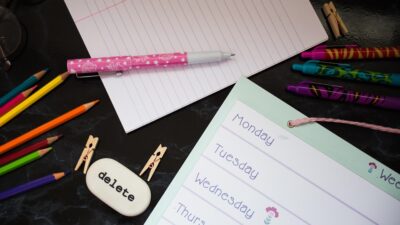Meal prepping has rapidly gained popularity as a strategic approach to cooking that is both budget-friendly and mindful of health. Whether you’re looking to save time during the week, maintain a healthier diet, or simply reduce food waste, meal prep can be a game changer. If you’re new to this culinary adventure, this guide will provide you with essential tools and techniques to kickstart your meal prepping journey.
Why Meal Prep?
Before diving into the tools and techniques, it’s essential to understand the benefits of meal prepping:
- Time-Saving: Prepping meals in advance means less time spent cooking daily, allowing you to enjoy more leisure time.
- Healthier Choices: Having prepared meals available can reduce temptation and reliance on fast food or unhealthy snacks.
- Budget-Friendly: Buying ingredients in bulk and planning meals can save you money in the long run and reduce food waste.
- Portion Control: Prepping meals in advance helps with controlling portions, making it easier to manage calorie intake.
Essential Tools for Meal Prep
To start meal prepping effectively, you’ll need a few key tools:
1. Quality Containers
Invest in a set of durable, microwave-safe containers. Opt for glass or BPA-free plastic containers with airtight lids to ensure freshness. Look for a variety of sizes to accommodate different types of meals and snacks.
2. Food Scale
A food scale is essential for portion control. It allows you to measure ingredients accurately, ensuring you’re sticking to your dietary goals.
3. Cutting Board and Knives
A sturdy cutting board and a good chef’s knife are crucial for chopping vegetables, fruits, and proteins efficiently. Sharp knives make cutting quicker and safer.
4. Mixing Bowls
A set of mixing bowls can help you combine ingredients, marinate proteins, or prepare salads before storage. Nesting bowls save space and are versatile for various tasks.
5. Measuring Cups and Spoons
Having a set of measuring cups and spoons ensures that you are following recipes accurately, which is crucial when you’re new to cooking.
6. Labels and Markers
Labeling containers with the contents and dates is crucial for food safety and organization. Use washable markers or labels that can be reused.
7. Freezer Bags
For meals you want to store long-term, freezer bags are perfect for keeping food fresh. They take up less space than containers and can be stacked easily.
8. Slow Cooker or Instant Pot
These appliances are fantastic for one-pot meals and can help save time during busy weeks. They can also transform tough cuts of meat into tender, flavorful dishes.
Effective Meal Prep Techniques
Now that you’re equipped with the essential tools, here are some techniques to streamline your meal prep process:
1. Plan Your Meals
Start by brainstorming recipes for the week. Consider your schedule and choose meals that can be stored well and reheated easily. Websites, apps, or cookbooks can provide inspiration.
2. Create a Grocery List
Once you have your meal plan, create a shopping list organized by food categories. This will help you shop efficiently and avoid impulse buys.
3. Batch Cook
Prepare food in large quantities, particularly staples like grains (rice, quinoa), proteins (chicken, beans), and roasted vegetables. Batch cooking allows you to mix and match different components.
4. Commit One Day a Week to Meal Prep
Set aside a dedicated day, whether it’s Sunday or any other day that works for you, to prepare your meals for the week. This routine will help you maintain consistency.
5. Use Theme Days
Consider designating specific days for different themes (e.g., Meatless Mondays, Taco Tuesdays) to make planning easier and keep your meals interesting.
6. Pack Balanced Meals
Aim for a balance of carbohydrates, proteins, and healthy fats. A simple formula is to fill half your container with vegetables, a quarter with your protein, and a quarter with your carbs.
7. Store and Reheat Properly
Store meals properly in the fridge or freezer, and when reheating, ensure they reach the appropriate internal temperature to avoid foodborne illness.
Conclusion
Meal prepping doesn’t have to be overwhelming. By equipping yourself with the right tools and techniques, you can joyfully embrace this culinary practice that not only saves time and money but also promotes a healthy lifestyle. Take it one step at a time, and soon you’ll find that cooking ahead of time becomes an effortless part of your weekly routine. Happy prepping!



